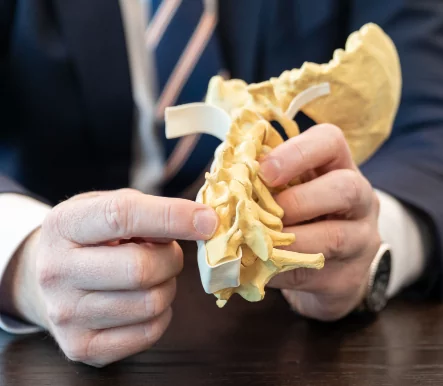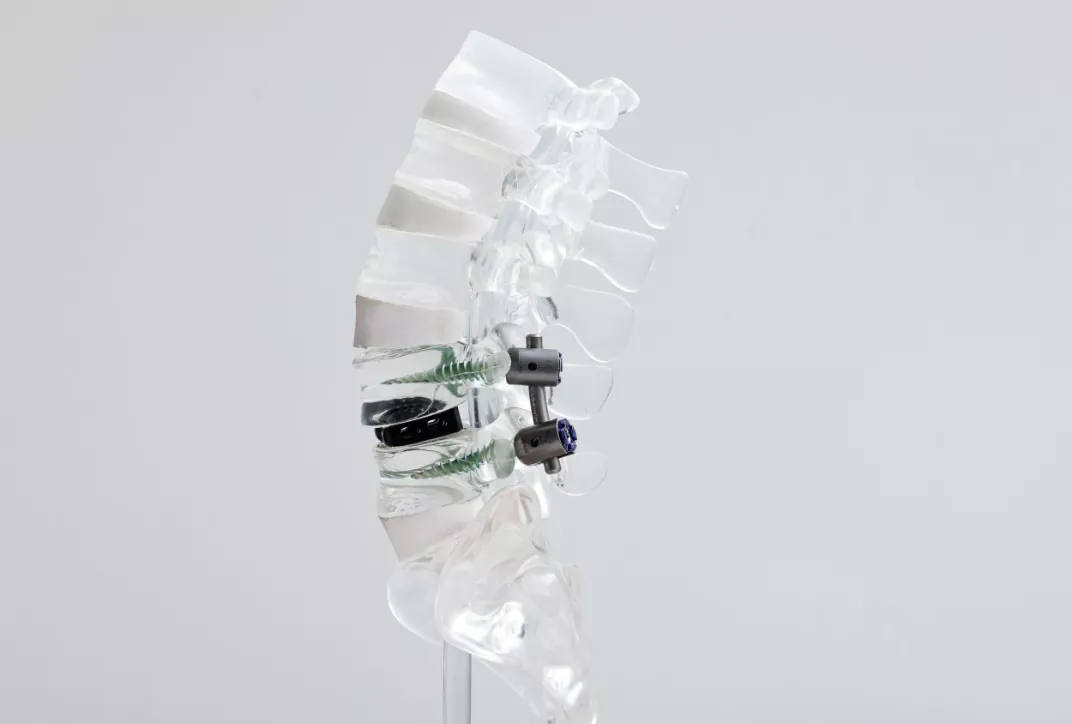The Lumbar Spine
What is the anatomy of the lumbar spine?
The lumbar spine is made up of five vertebrae (L1–L5), with a disc sitting between each one. The main part of the vertebra, known as the body, is positioned at the front, while the discs act as cushions between these vertebral bodies. Each disc is named after the vertebrae it lies between; for example, the L4/5 disc sits between the L4 and L5 vertebrae.
Behind the vertebral bodies is a bony ring that houses the lower end of the spinal cord, which ends around the L1/2 level, and the nerve roots that continue downward. The back of this ring is formed by the lamina and spinous processes, which also serve as attachment points for muscles supporting and moving the spine. Below the end of the spinal cord, the nerve roots extend in a bundle called the cauda equina, meaning ‘horse’s tail’. These nerve roots are surrounded by spinal fluid within a protective sac called the dura and exit the spine through openings known as intervertebral foramina. Each nerve root provides sensation and muscle control to specific parts of the body.
The discs themselves consist of two main components. The annulus fibrosus forms a tough outer layer of criss-crossing fibres, while the nucleus pulposus is a soft, gel-like centre that provides cushioning and flexibility to the spine during movement.



